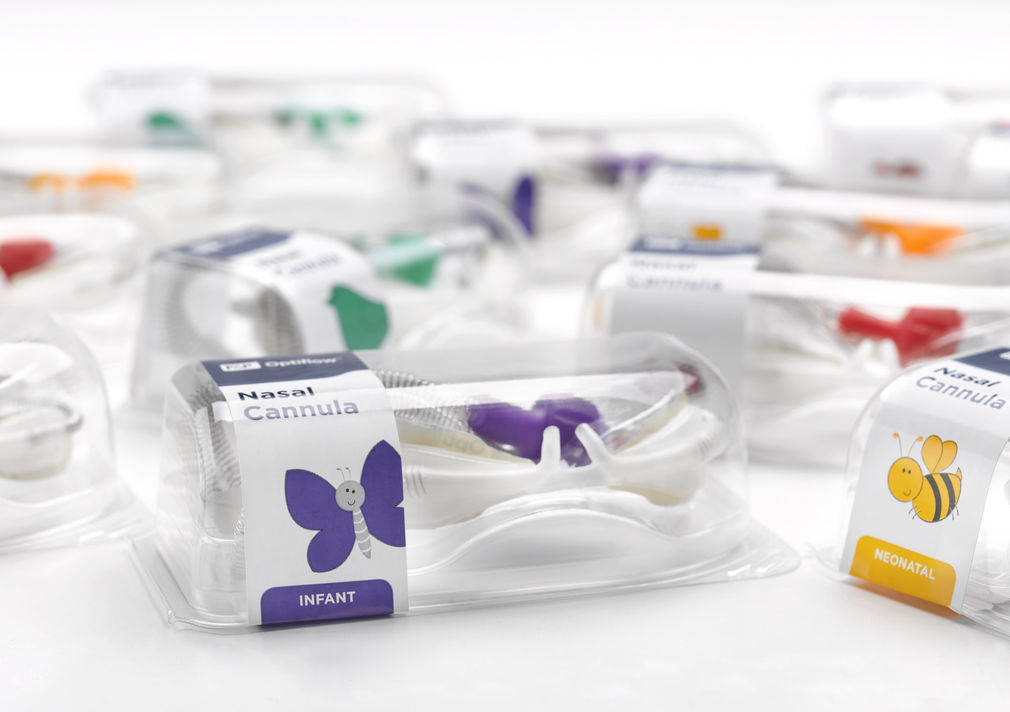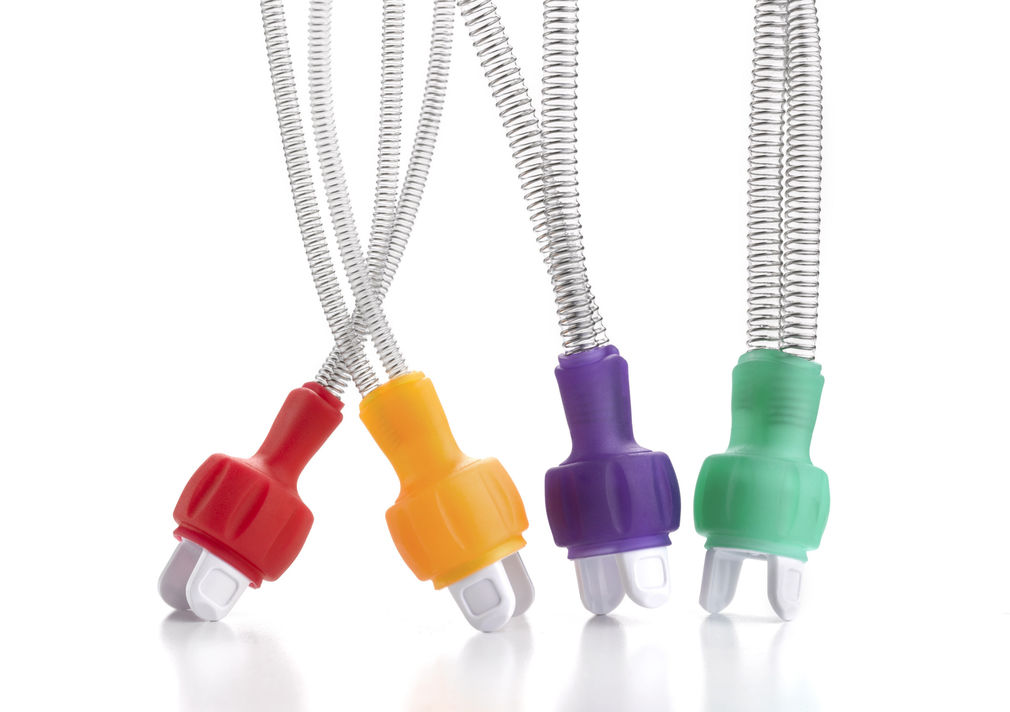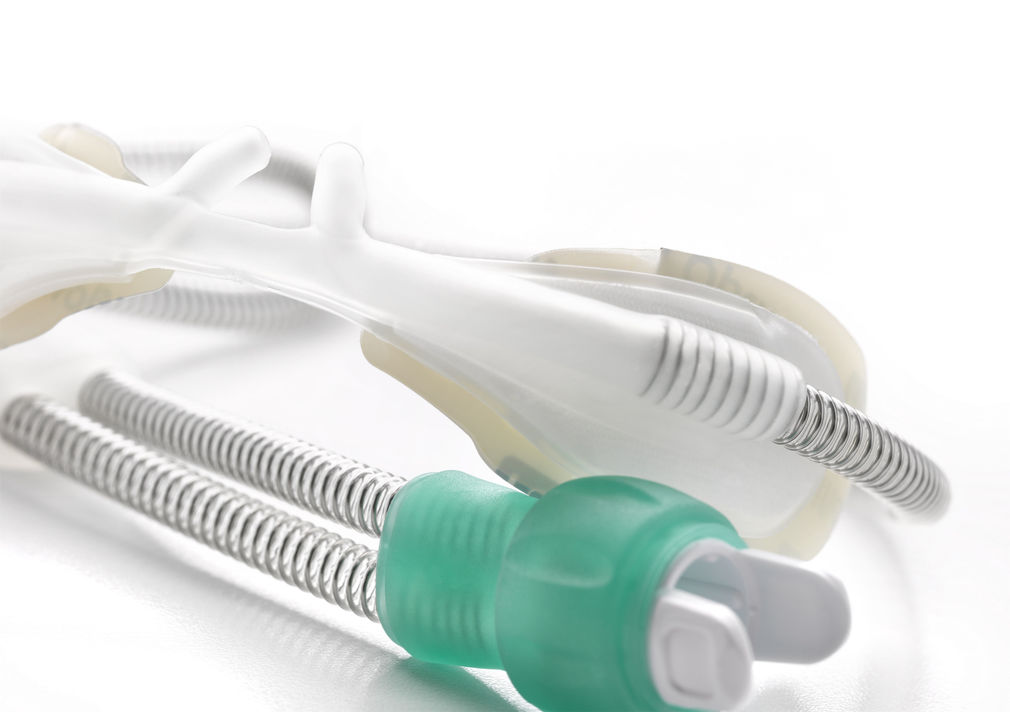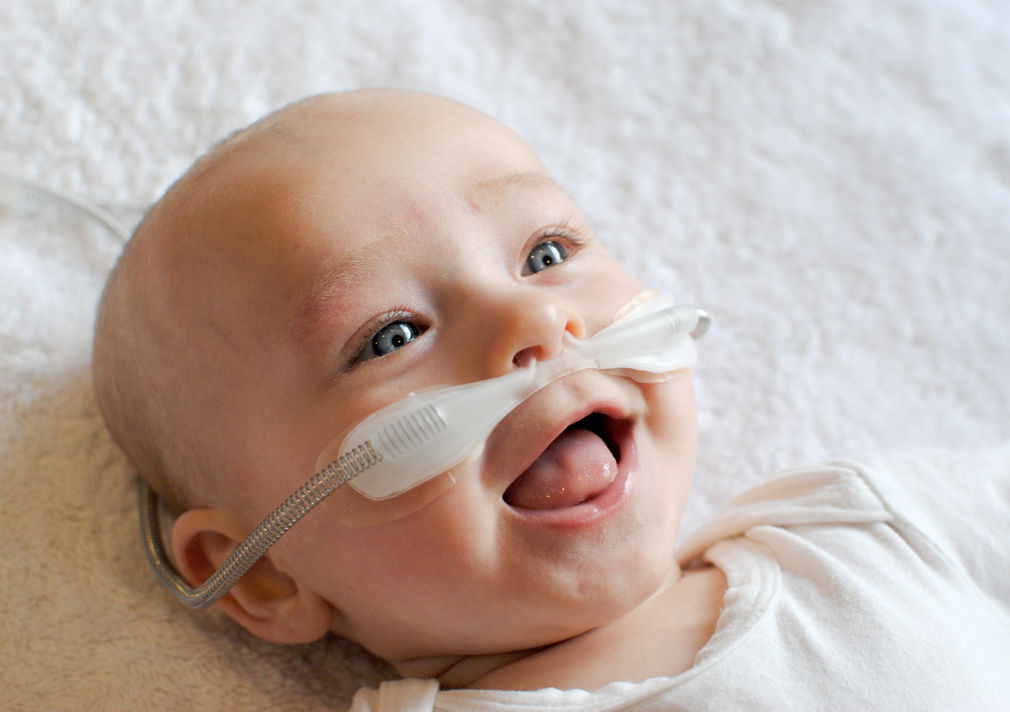Optiflow therapy – where heated, humidified air is delivered to patients in respiratory distress through the nose – has rapidly gained worldwide industry recognition as a revolutionary treatment that leads to improved patient outcomes, reduced recovery times, and increased cost savings for hospitals.
Purple Pin Case Study — Product
Fisher & Paykel Healthcare
Optiflow™ Junior
Background



This feels like design heavily entrenched in research. Is this the case?
The research phase of the project took over a year and involved sending engineers out to hospitals around the world. At the bedside we observed and talked to doctors, nurses and respiratory therapists who have different roles in different countries. It was important for us to understand both what they wanted, and also what they didn’t know they wanted.
A good example of this is a comment we regularly got from nurses who asked for “pre-cut tape” as a way to simplify application and re-application of the cannula. It turns out that we were able to solve that problem in a different way, but the key was to drill down into an understanding of the motivations behind their suggestions.



What were the drivers behind the graphical elements in your packaging design?
One of the key problems to solve was how to make it easy to determine the size of the cannula. One of the problems with the older product was that once the product had been taken from its packaging and applied to the patient it was difficult for nurses to determine which size had been used. If the cannula needed to be replaced, another fitting was often required to determine the appropriate size.
Two key objectives for the connector design were to make the connector physically unobtrusive, but also visually arresting so that the size could be determined and remembered easily. Bright colours were used to denote the sizing and could be carried through the product, packaging and supporting material.
The design of the Optiflow “critters” was another way facilitate successful sizing. By changing what the customer needed to remember from a six-digit code to a memorable cartoon character we were able to help jog their memories as well as soften the perception of the product. By designing the critters to match the colour and size of the cannula we were able to give the nursing staff another tool to help them remember the correct size required for a given patient.
Saving infant lives must be a gratifying outcome?
Coming in to the office every day and seeing such a direct impact on people’s lives is very motivating. These patients have about as rough a start to life as you can get, so helping give them the best chance of survival makes a huge difference. In a few years maybe we’ll meet some of them face to face.
—Craig White, Fisher & Paykel Healthcare